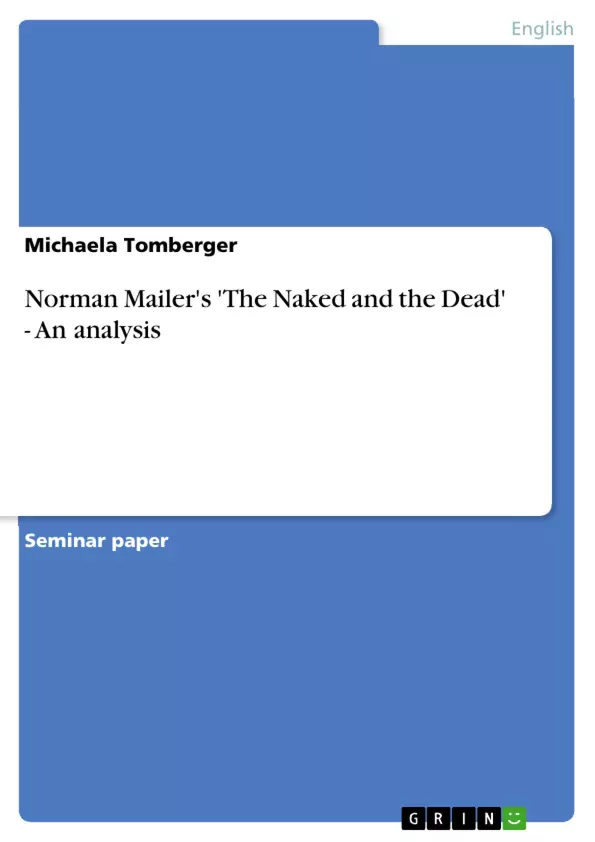This paper deals with the relationship between fiction and traditional and New Journalism. I have taken Norman Mailer´s novel 'The Naked and the Dead' as an example of fiction influenced by New Journalism and my paper intents to show the relationship on the basis of this novel and other contemporary texts.
The first chapter deals briefly with the author´s motivation to write the novel and more extensively with the referential material used, referring partly to the author´s own experience and to the existence of derived material, which has to be taken into account as well.
The next chapter states the parts the novel consists of and gives a brief analysis of how structure and point of view work in the novel.
The main focus of the paper is the next chapter: Norman Mailer and New Journalism. After a definition of “traditional” and “New Journalism” these terms are brought into relation with Mailer´s novel with regard to the most eminent features: perspective, details and language.
The last chapter features the narrative techniques Mailer employed and how these techniques provide the reader with closer insights into the novel´s characters and events.
Table of Contents
- Introduction
- The author's motivation and referential information
- Structure of the novel
- Structure and Point of View
- Norman Mailer and New Journalism
- New Journalism in The Naked and the Dead: Perspective Details - Language
- Narrative Technique
- Conclusion
- Bibliography
Objectives and Key Themes
This paper examines the connection between fiction and both traditional and New Journalism, using Norman Mailer's novel The Naked and the Dead as a case study. The paper aims to demonstrate the influence of New Journalism on fiction and explore this relationship through the lens of the novel and other texts discussed in the course Periodismo y Ficción en los E.E.U.U.
- The impact of New Journalism on fictional writing.
- The author's motivation and referential information used in the novel.
- The structure and point of view employed in The Naked and the Dead.
- The relationship between New Journalism and traditional journalistic practices.
- The narrative techniques used in the novel and their effect on the reader's understanding of characters and events.
Chapter Summaries
The first chapter provides a brief overview of the author's motivation for writing the novel and delves into the referential material used, including the author's personal experiences and derived material. The second chapter outlines the structure of the novel and examines how structure and point of view contribute to the overall narrative. The third chapter, the core of the paper, focuses on the relationship between Norman Mailer and New Journalism. It defines both traditional and New Journalism and explores their connection to the novel's features such as perspective, details, and language. The fourth chapter examines the narrative techniques employed by Mailer and their impact on the reader's understanding of the novel's characters and events.
Keywords
The key terms and concepts explored in this paper include New Journalism, traditional journalism, fiction, war literature, Norman Mailer, The Naked and the Dead, structure, point of view, narrative techniques, realism, and the relationship between fiction and non-fiction.
- Citar trabajo
- Mag.Phil. Michaela Tomberger (Autor), 1998, Norman Mailer's 'The Naked and the Dead' - An analysis, Múnich, GRIN Verlag, https://www.grin.com/document/10449



